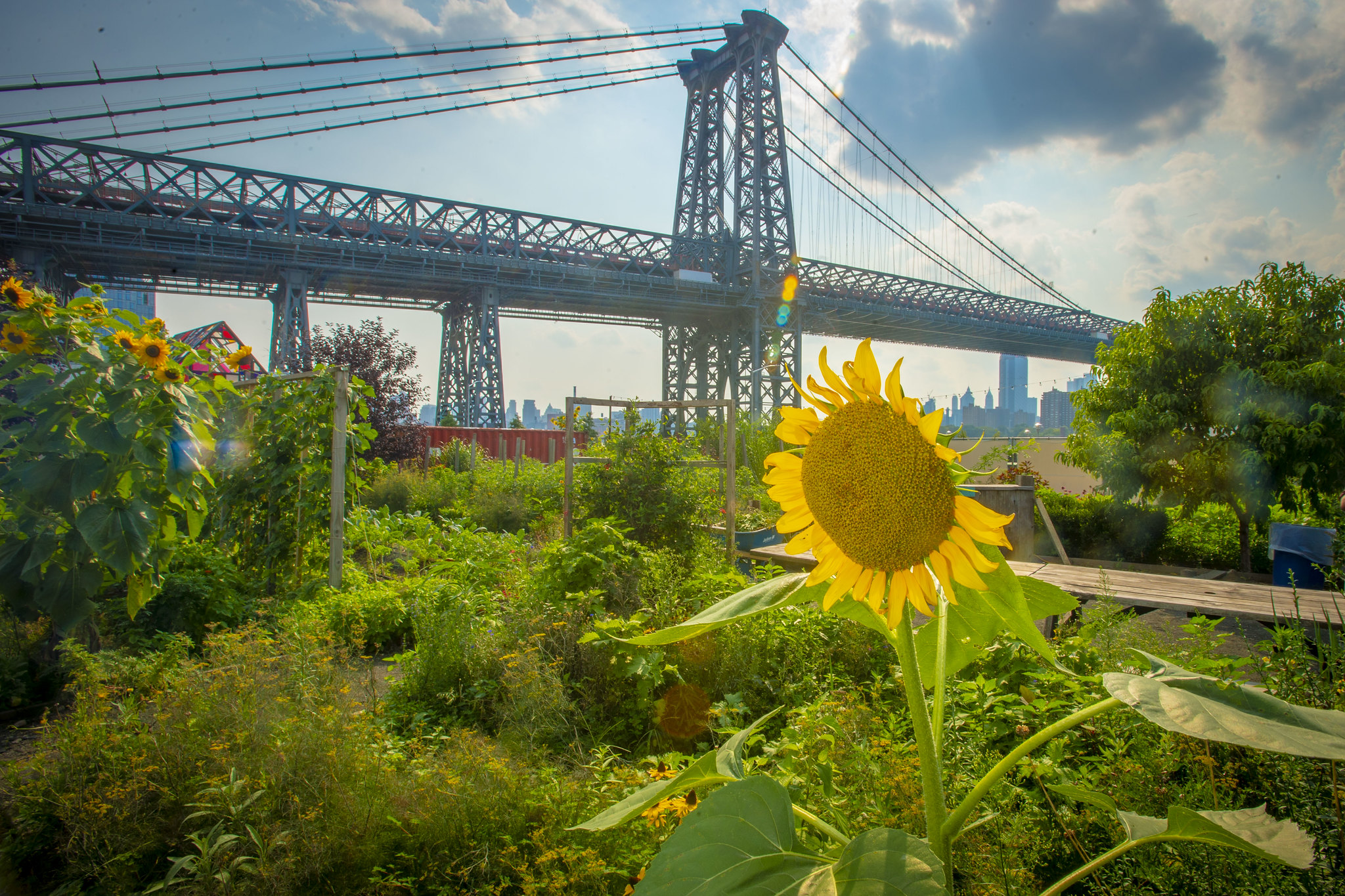Urban
 Urban areas are already experiencing impacts of a changing climate including increased temperatures, flooding, and extreme storms. These impacts are projected to increase in frequency and magnitude over the next century, leading many cities to develop plans to adapt and prepare for these challenges. Agriculture and forestry sectors can both work to address these changes in an urban environment.
Urban areas are already experiencing impacts of a changing climate including increased temperatures, flooding, and extreme storms. These impacts are projected to increase in frequency and magnitude over the next century, leading many cities to develop plans to adapt and prepare for these challenges. Agriculture and forestry sectors can both work to address these changes in an urban environment.
Urban agriculture helps to address local food insecurity issues in cities and suburban areas. Growing food in cities can take the form of backyard, roof-top and balcony gardening, community gardening in vacant lots and parks (sometimes spanning several city blocks), roadside urban fringe agriculture, livestock grazing in open space and intensive indoor hydroponic or aquaculture facilities. Urban agriculture eases access to food, reconnects communities to the practice of growing food, and engages the community on a variety of levels. Increasing tree canopy is often considered in urban climate change adaptation plans, where trees can help reduce local heat island effects, control storm water, and improve air quality. Although urban trees can be an important part of adaptation solutions, they also can be vulnerable to the impacts of climate change. These urban trees may be experiencing stress from improper planting, restricted rooting conditions, road salt, and air pollution already, and therefore extremely vulnerable to climate change.
Browse related content:
-
Northwest Urban Green Spaces and Climate Change
Urban green spaces provide one tool for cities to combat the causes and effects of climate change.
-
Urban Forests and Human Health Adaptation Menu
The Urban Forests and Human Health Adaptation Menu is a flexible resource that synthesizes a wide range of peer-…
-
Adaptation Menus of Strategies and Approaches
Adaptation menus provide a curated list of adaptation strategies, approaches, and tactics to integrate the effects of…
-
Urban Forest Vulnerability Assessments
Browse city specific urban forest vulnerability assessments within the Midwest and Northeast.
-
Recursos de Adaptación en Español
Recursos de adaptación en Español incluidos libros de trabajo de planificación y estrategias y enfoques de adaptación.
-
Puget Sound Urban Tree Vulnerability
Climate change will impact the vulnerability and suitability of urban tree species in the Puget Sound region
-
Puget Sound Region: Tree Species Vulnerability Assessment
This report summarizes climate change projections for the Puget Sound region and provides an assessment of tree species…
-
Considering Climate Change in Tree Planting
This guide provides a step-by-step process to help you consider climate change when selecting a tree for planting at a…
-
Urban Heat Islands in the Northwest
Urban areas are heating up faster than rural areas, affecting public health and increasing energy demands in the…










